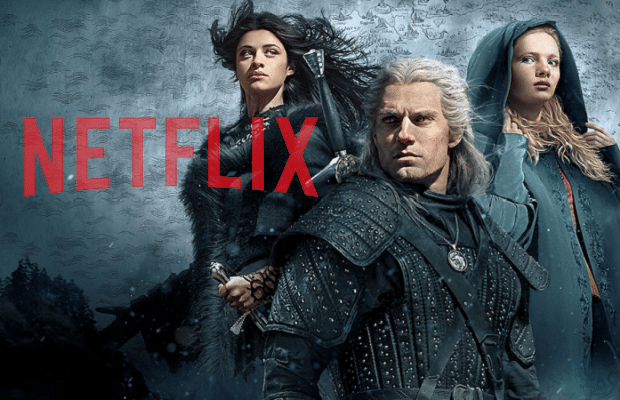
The video streaming giant also courted controversy with a new viewing metric, claiming its new fantasy series The Witcher was watched by 76 million households, making it the most-watched first season of television ever for Netflix.
However, this was due to the firm’s new definition of “watched,” which it changed from “watched 70% of a single episode of a series” to anyone who “chose to watch and did watch for at least 2 minutes.”
In explaining the new metric, Netflix notes that the two-minute time period is meant to be “long enough to indicate the choice was intentional,” and it says that it follows similar metrics used by BBC’s iPlayer, YouTube, and The New York Times’ measurements of page views.
Netflix acknowledged that the new two-minute metric is “about 35% higher on average than the prior metric.”
It also said that even more people watched 6 Underground, an explosion-fest directed by Michael Bay, which hit 83 million household views in the first month.
Netflix added 8.76 million paid net subscribers globally, surpassing its own forecast and Bloomberg consensus. The company owed the beat to an impressive ramp-up of subscribers outside the US. It added 8.33 million subscribers internationally, far more than forecast.
However, in the US, where rival Disney Plus launched during the fourth quarter, Netflix added just 420,000 paid net subscribers, below its guidance of 600,000. It was the third quarter in a row where Netflix missed its targets for US subscriber growth.
Netflix said it added more quarterly paid net subscriber than ever before in every region, except the US and Canada. Most of the company’s subscriber growth is now international, with 106 million paid subscribers.
Netflix also brought in more revenue during the quarter than expected. It posted $5.47 billion in revenue, 31% more than a year ago and slightly above analysts’ estimates.
‘Whatever it takes to get the advantage’
Mark Inskip, CEO of Kantar’s UK&I Media Division, said: “Netflix’s share price is up – and that bodes well for streaming services who clearly still have the power to pull in the consumers despite a period of prolonged, fierce competition. That chimes with our own research, which reveals that 52% of consumers already pay for a TV or video streaming service, citing the primary reason for doing so as access to shows and films they can’t get elsewhere.
“But as streaming services become more saturated, content creators will need to do whatever it takes to get even the smallest advantage over their competitors. Increasingly, that means ramping up the premium content to keep consumers interested – but also providing cheaper, ad-funded alternatives for those who can’t or won’t pay.
“Whichever route streaming platforms choose, careful measurement of how, why and where users are engaging with and consuming content will be key to making informed decisions and getting the balance just right.
’Feeling the heat from competitors’
Luke Bozeat, Chief Operating Officer at MediaCom UK, argues that despite Netflix’s positive earnings, it is starting to feel the heat from its vast new competition.
“This is the first quarter where Netflix has started to feel the heat from competitors,” Bozeat said. “The streaming giant not only needs to contend with established players like Sky’s Now TV and Amazon Prime but also new players like Disney+, Britbox, Apple TV+ and Peacock.
“Netflix may have been the first to break into the streaming market, but others are catching up and cracks are starting to show. While the company
s famously said it will never introduce advertising to fund its business model, the reality is that producing award-winning and attention-grabbing shows require deep pockets. And this is something that subscriptions alone may be unable to fill; and consumers are forced with either paying a sizeable sum to access each company’s sizeable content library, or choosing a handful of streaming services that they’re willing to invest in.”
‘Data will be a false friend’
“Resetting the base for how stats are calculated is one of the fundamental watch-outs for anyone looking at digital media” explains Danny Meadows-Klue – the co-founder for the IAB trade association who ran the pan-European digital media metrics task force of trade associations for 5 years.
“The choice of measurement has to be appropriate for describing the activity. Switching from a robust approach where you’re counting viewing 70% of an asset as a view, to only 2 minutes will instantly catapult the audience numbers in their favour. This means all historic data comparisons become meaningless, and for brands trying to measure their exposure in product placement the data will be a false friend.”
